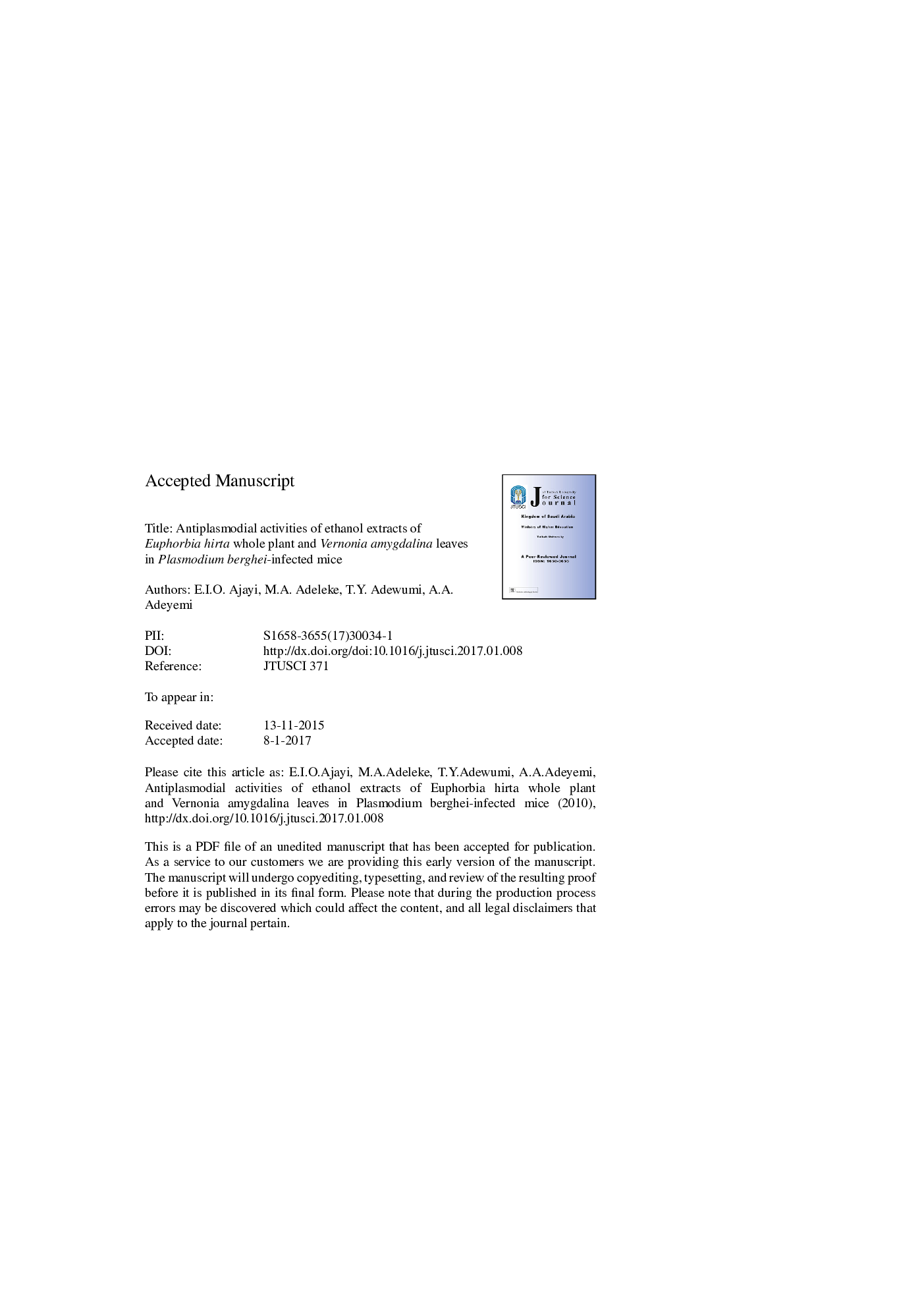| Article ID | Journal | Published Year | Pages | File Type |
|---|---|---|---|---|
| 7698409 | Journal of Taibah University for Science | 2017 | 20 Pages |
Abstract
The African continent is rich in both flora and fauna resources, which have been extensively used locally in the treatment or cure of a wide variety of ailments. Enquiries into traditional folklore revealed that Euphorbia hirta and Vernonia amygdalina possess antiplasmodial properties among others for the treatment of febrile conditions. We therefore investigated the phytochemistry, antimalarial potencies, hepatic toxicities and renal toxicities of the crude ethanol extract of the whole plant of Euphorbia hirta (CEEH) and leaves of Vernonia amygdalina (CEVA) using standard procedures. The obtained results showed that CEEH and CEVA contain flavonoids, alkaloids, tannins and saponins, but not phlobatannins. CEEH and CEVA mildly inhibited P. berghei schizont maturation (44.36% and 37.85%, respectively), while Artesunate Combination Therapy (ACT) was only slightly potent (>50%) against chloroquine-sensitive P. berghei. CEEH significantly decreased ALP, but significantly increased bilirubin. Both extracts significantly increased the albumin and total protein levels compared to infected, untreated animals. Compared to Camosunate®, CEVA caused further significant increases in creatinine and urea. However, these increases did not indicate organ damage.
Related Topics
Physical Sciences and Engineering
Chemistry
Chemistry (General)
Authors
E.I.O. Ajayi, M.A. Adeleke, T.Y. Adewumi, A.A. Adeyemi,
